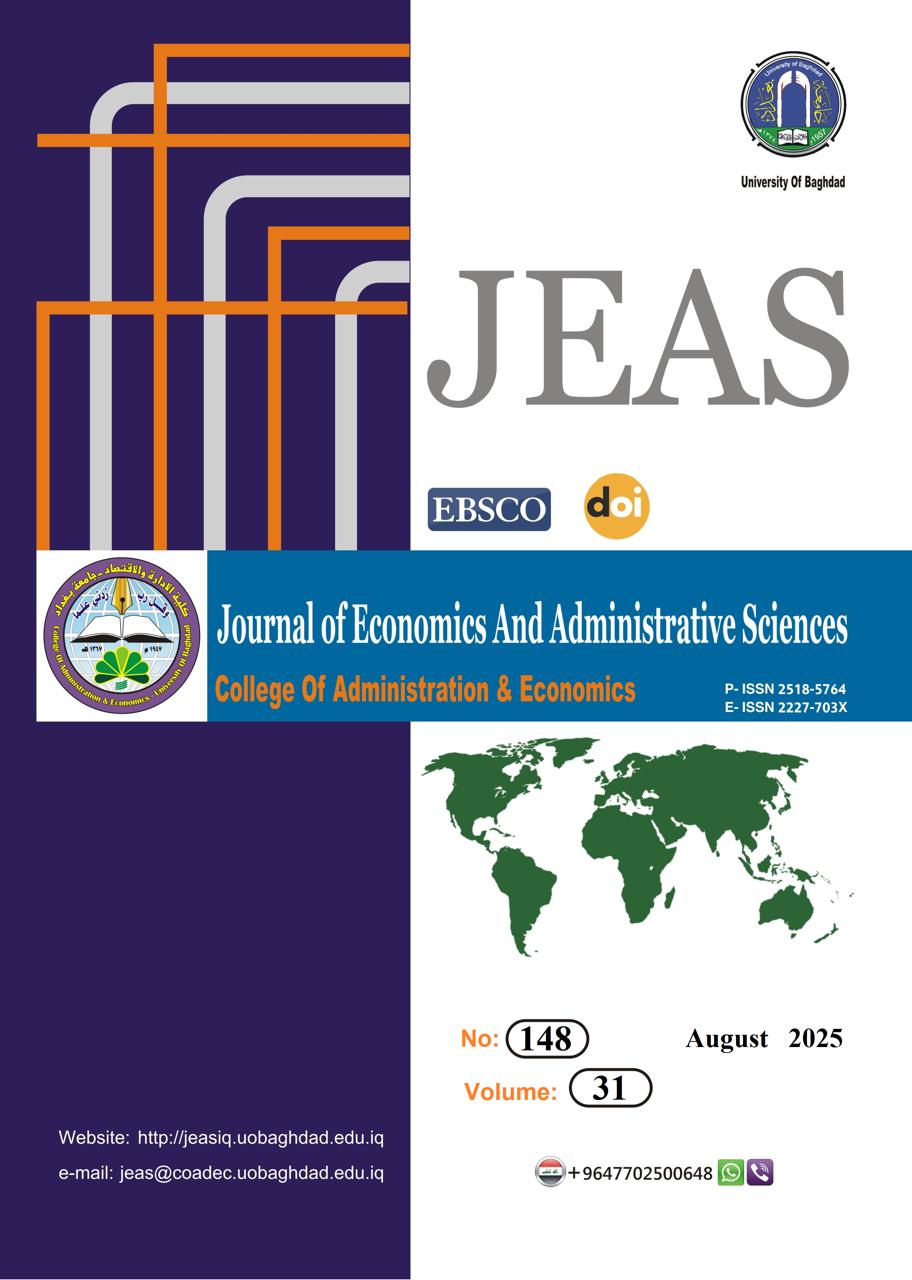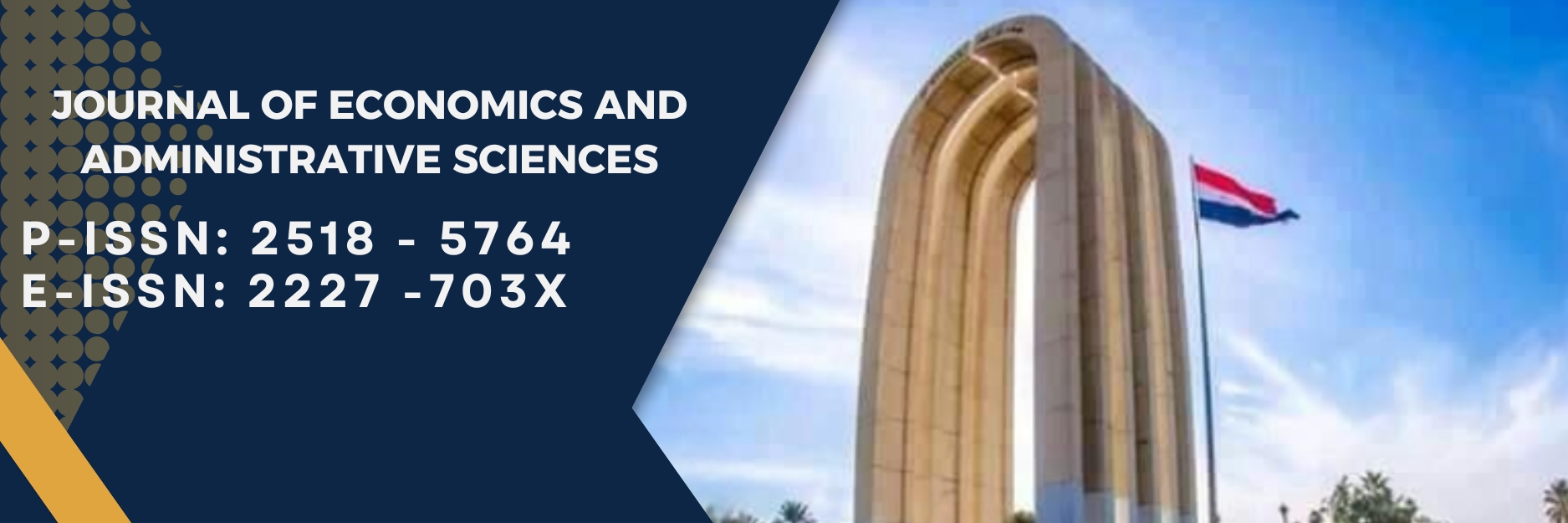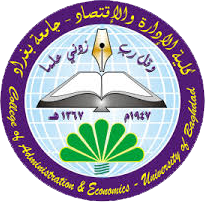Economic Analysis of the Impact of Development Programs on Buffalo Milk Producers in the Marshes of Iraq as A model
DOI:
https://doi.org/10.33095/5ytqsw20Keywords:
Molasses Technique, Technical Efficiency, Superior Logarithmic Function.Abstract
The research examined the impact of development programs on local buffalo milk producers in the marsh areas of Iraq, focusing on productivity levels and residents' living standards. Data was collected from 200 producers in the governorates of Dhi-Qar, Maysan, and Basra, all participating in the development program.
The research assumed that the introduction of modern technologies and the provision of production requirements by international organizations or government initiatives would enhance the production levels and productivity of the rural population. Consequently, this improvement may reflect their standard of living and strengthen their connection to the land, thereby reducing migration. These individuals not only require support to maintain their self-reliance without the need for future aid but also to evolve into a dynamic economic force contributing to the development of the national economy.
Using a superior logarithmic production function analyzed by the Frontier statistical program, the study found that the number of buffalo and the amount of hay positively affected milk production. At the same time, bran and barley had a negative impact. Technical efficiency varied widely among breeders, with the highest efficiency at 0.9341 for a participant breeder and the lowest at 0.2910 for a non-participant. Those adopting technology had an average efficiency of 0.78 compared to 0.55 for non-adopters. The findings emphasize the positive role of technology in improving efficiency and underscore the need for increased adoption of these practices among producers. Furthermore, buffalo breeders in the marshlands produce with low technical efficiency due to their inefficient use of production resources. The study recommended increasing the use of modern technologies, urging breeders to increase their use, and facilitating their adoption of this technology.
Downloads
References
Sabbil, A. A. S., & Abdulrahman, B. M. A. (2022). Effects of Water Scarcity on Rural Household Economy. Journal of Economics and Administrative Sciences, 28(131), 109-118. https://doi.org/10.33095/jeas.v28i131.2236
Al-Nuaimy, S. Y., Zwaid, F. A., & Sultan, M. M. (2018). Economic production of buffalo breeding farms in the province of Nineveh (Badush area, a case study). Mesopotamia Journal of Agriculture, 4(46), 103–108. https://doi.org/10.33899/magrj
Al-Ani, T. M. Ala, H. Ala. (2017). The use of water resources in light of the challenges of water security in Iraq. Journal of Economics and Administrative Sciences, 24(103), 275. https://doi.org/10.33095/jeas.v24i103.113
Ali, E. H., Baker, Y. T., & Al-Douri, B. F. (2022). Effect of supplementary irrigation system on wheat production efficiency using a stochastic frontier analysis. Iraqi Journal of Agricultural Sciences, 53(2), 353–364. https://doi.org/10.36103/ijas.v53i2.1542
Ali, E. H., & Lafta, A. H. (2020). Measuring the economic efficiency and total productivity of resource and the technical change of agricultural companies in Iraq using SFA and DEA for the period 2005-2017. Iraqi Journal of Agricultural Sciences, 51(4).
Bardhan, D., & Sharma, M. L. (2013). Technical efficiency in milk production in underdeveloped production environment of India. SpringerPlus, 2(1), 1–7. https://doi.org/10.1186/2193-1801-2-65
Charoenrat, T. (2012). The technical efficiency of Thai manufacturing small and medium sized enterprises: a comparison between the pre-and post-financial crisis of 1997. University of Wollongong.
Chavas, J. P., & Aliber, M. (1993). An analysis of economic efficiency in agriculture: A nonparametric approach. Journal of Agricultural and Resource economics, 1-16.
Coelli, T. J. (1996). A guide to Frontier version 4.1: A computer program for stochastic frontier production and cost function estimation (CEPA Working Paper 96/07). Center for Efficiency and Productivity Analysis.
http://tarjomefa. com/wp-content/uploads/2017/07/7209-English-TarjomeFa. pdf.
El-Dalee, A. M. (2018). Economics of production in Beheira Governorate. Menoufia J. Agric. Economic & Social Sci., 3, 147–169.
Farrell, M. J. (1957). The Measurement of Productive Efficiency. Journal of the Royal Statistical Society. Series A (General), 120(3), 253–290. https://doi.org/10.2307/2343100
Gül, M., Yilmaz, H., Parlakay, O., Akkoyun, S., Bilgili, M. E., Vurarak, Y., Hizli, H., & Kiliçalp, N. (2018). Technical efficiency of dairy cattle farms in East Mediterranean region of Türkiye. Scientific Papers Series Management, Economic Engineering in Agriculture and Rural Development, 18.
Husain, E. A. (2017). Sustainable Agricultural Development in Iraq ... Solutions and Treatments Obstacles). Journal of Economics and Administrative Sciences, 23(95), 345. https://doi.org/10.33095/jeas.v23i95.392
Islam, M. S., Nahar, T., Begum J., Khatun, M., & Mustafa, A. (2016). Economic Evaluation of Buffalo Production in selected regions of Bangladesh. https://www.researchgate.net-/publication/325544072
Li, L. L., Seo, Y. J., & Ha, M. H. (2021). The efficiency of major container terminals in China: super-efficiency data envelopment analysis approach. Maritime Business Review, 6(2), 173–187. https://doi.org/10.1108/MABR-08-2020-0051
Lin, W.-C., Liu, C.-F., & Chu, C.-W. (2005). Performance efficiency evaluation of Taiwan’s shipping industry: an application of data envelopment analysis. Proceedings of the Eastern Asia Society for Transportation Studies, 5, 467–476.
Ma, W., Bicknell, K., & Renwick, A. (2019). Feed use intensification and technical efficiency of dairy farms in New Zealand. Australian Journal of Agricultural and Resource Economics, 63(1), 20–38. https://doi.org/10.1111/1467-8489.12283
Mokhtar, K. (2013). Technical efficiency of container terminal operations: a DEA approach. Journal of Operations and Supply Chain Management, 6(2), 1–19.
https://doi.org/10.12660/joscmv6n2p1-19
Neda, S. T. S., & Maqtof, H. S. (2021). Evaluating the Efficiency of the Municipal Sector in Anbar Governorate, using the Non-Parametric Approach (DEA). Journal of Economics and Administrative Sciences, 27(126), 223-244. https://doi.org/10.33095/jeas.v27i126.2104
Published
Issue
Section
License
Copyright (c) 2025 Journal of Economics and Administrative Sciences

This work is licensed under a Creative Commons Attribution-NonCommercial-NoDerivatives 4.0 International License.
Articles submitted to the journal should not have been published before in their current or substantially similar form or be under consideration for publication with another journal. Please see JEAS originality guidelines for details. Use this in conjunction with the points below about references, before submission i.e. always attribute clearly using either indented text or quote marks as well as making use of the preferred Harvard style of formatting. Authors submitting articles for publication warrant that the work is not an infringement of any existing copyright and will indemnify the publisher against any breach of such warranty. For ease of dissemination and to ensure proper policing of use, papers and contributions become the legal copyright of the publisher unless otherwise agreed.
The editor may make use of Turtitin software for checking the originality of submissions received.


























